Inner Reflections
August 11, 2020
EPISODE 84
Working with Pain in Yoga
Pain is the body’s way of sounding the alarm that something is wrong. It is paramount that we listen to the intelligence of our body in order to avoid injury.
In this podcast, we will explore the wisdom of pain in yoga and discerning the difference between good pain and bad pain.
Hope you enjoy this inspiring episode!
Thank you for supporting the podcast by rating, reviewing, subscribing and sharing with your community!
Support the Be Ultimate Podcast with a donation. Any amount is greatly appreciated!
HOW CAN I SUPPORT THE PODCAST?

Tell Your Friends & Share Online!
Subscribe & Review: iTunes | Spotify | Stitcher | Youtube
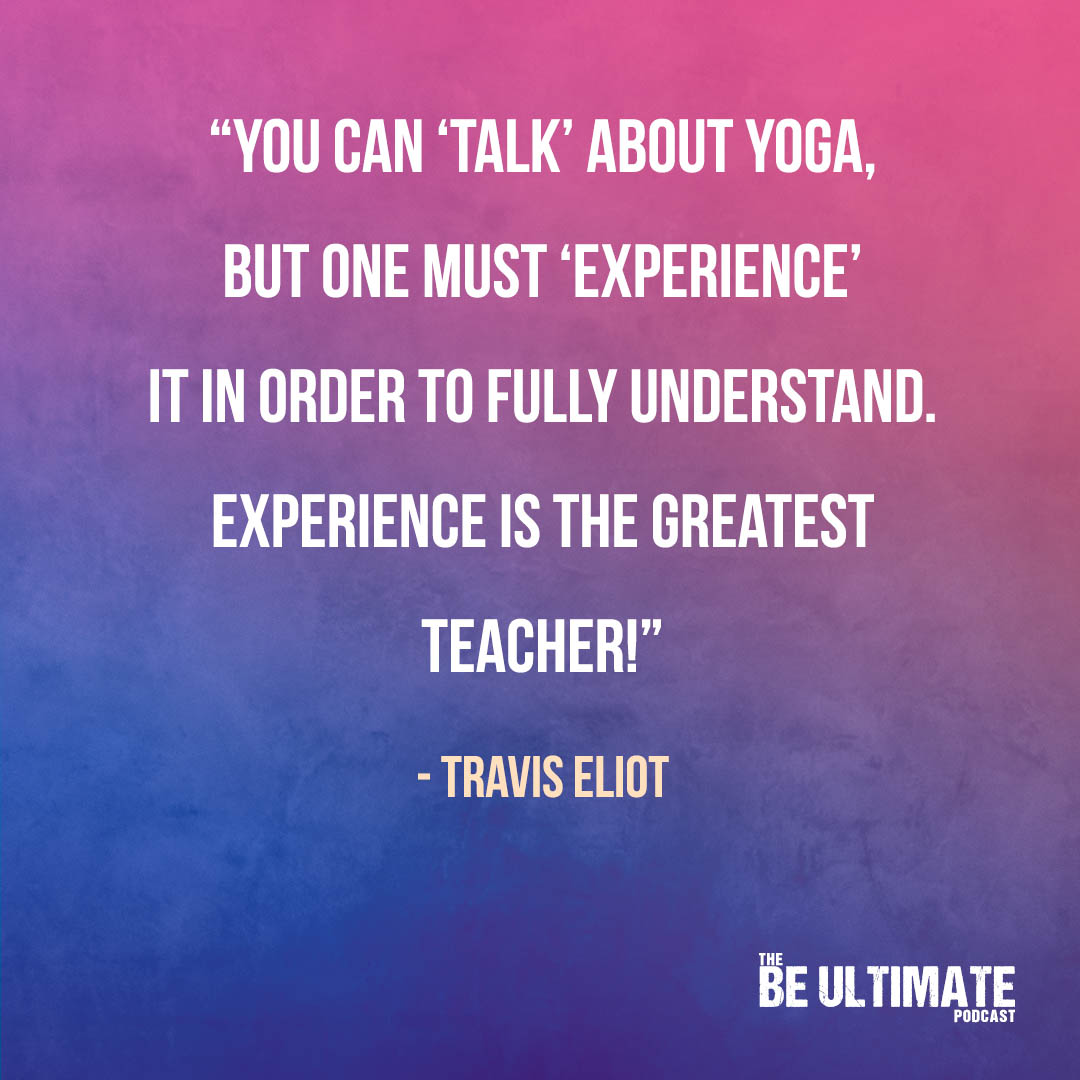
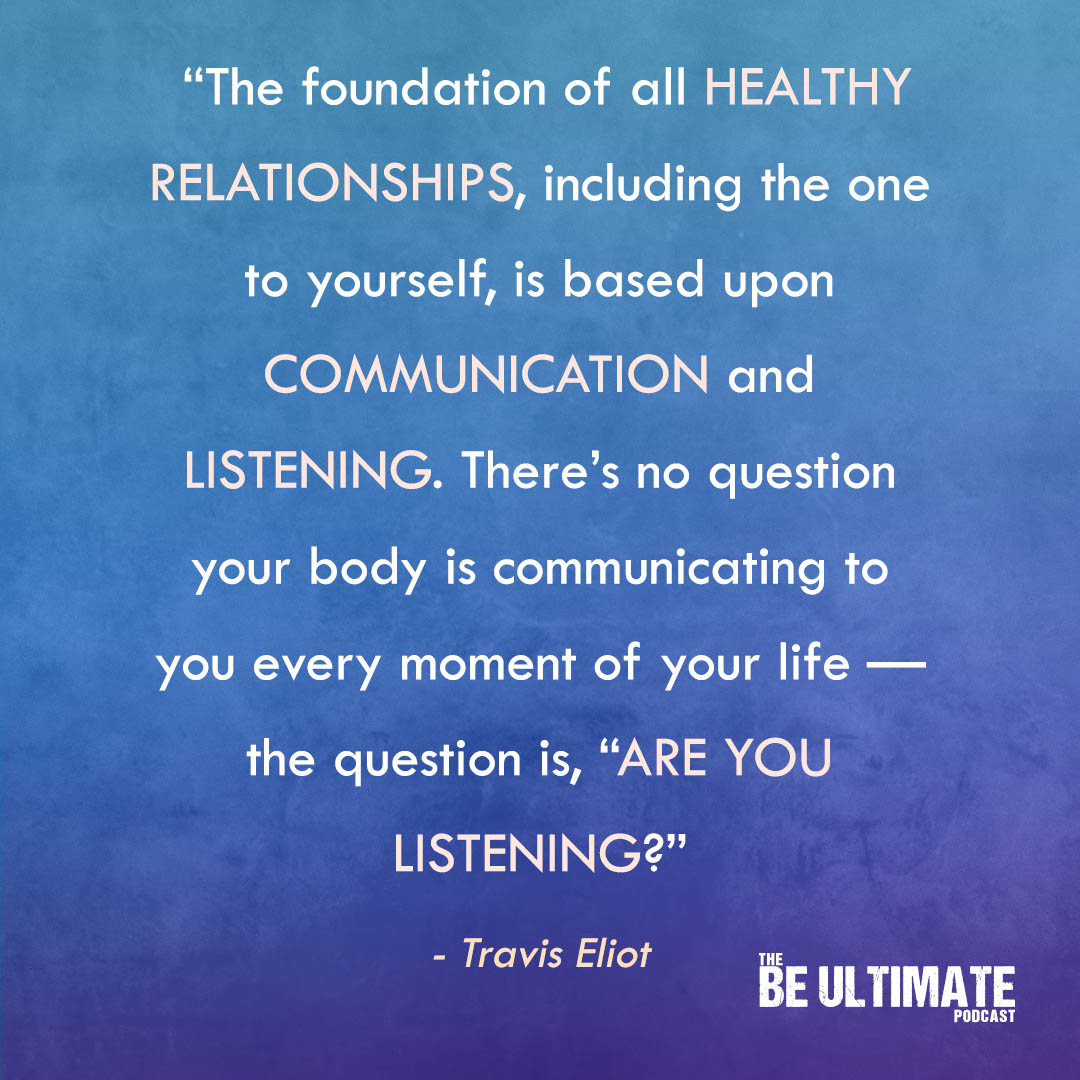
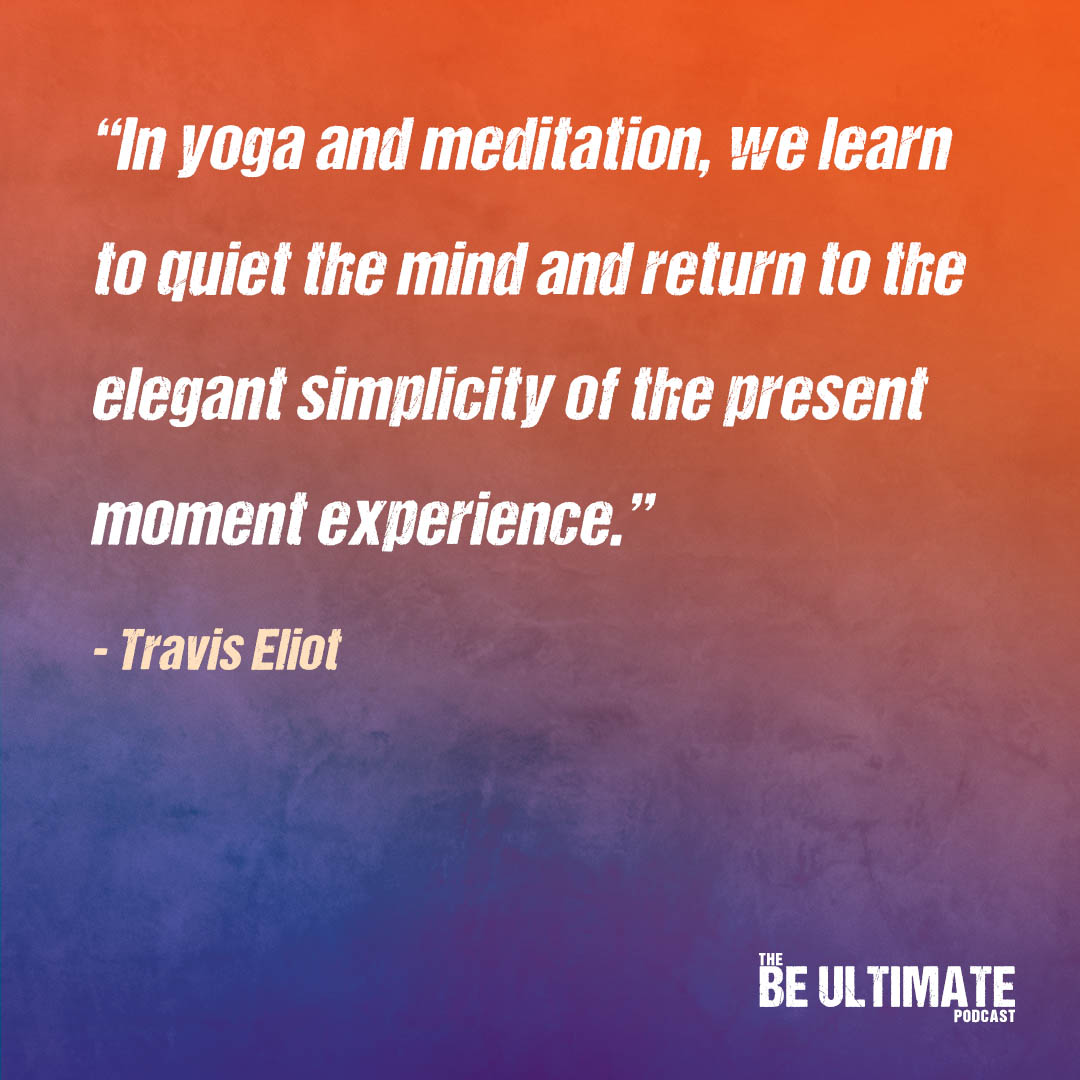
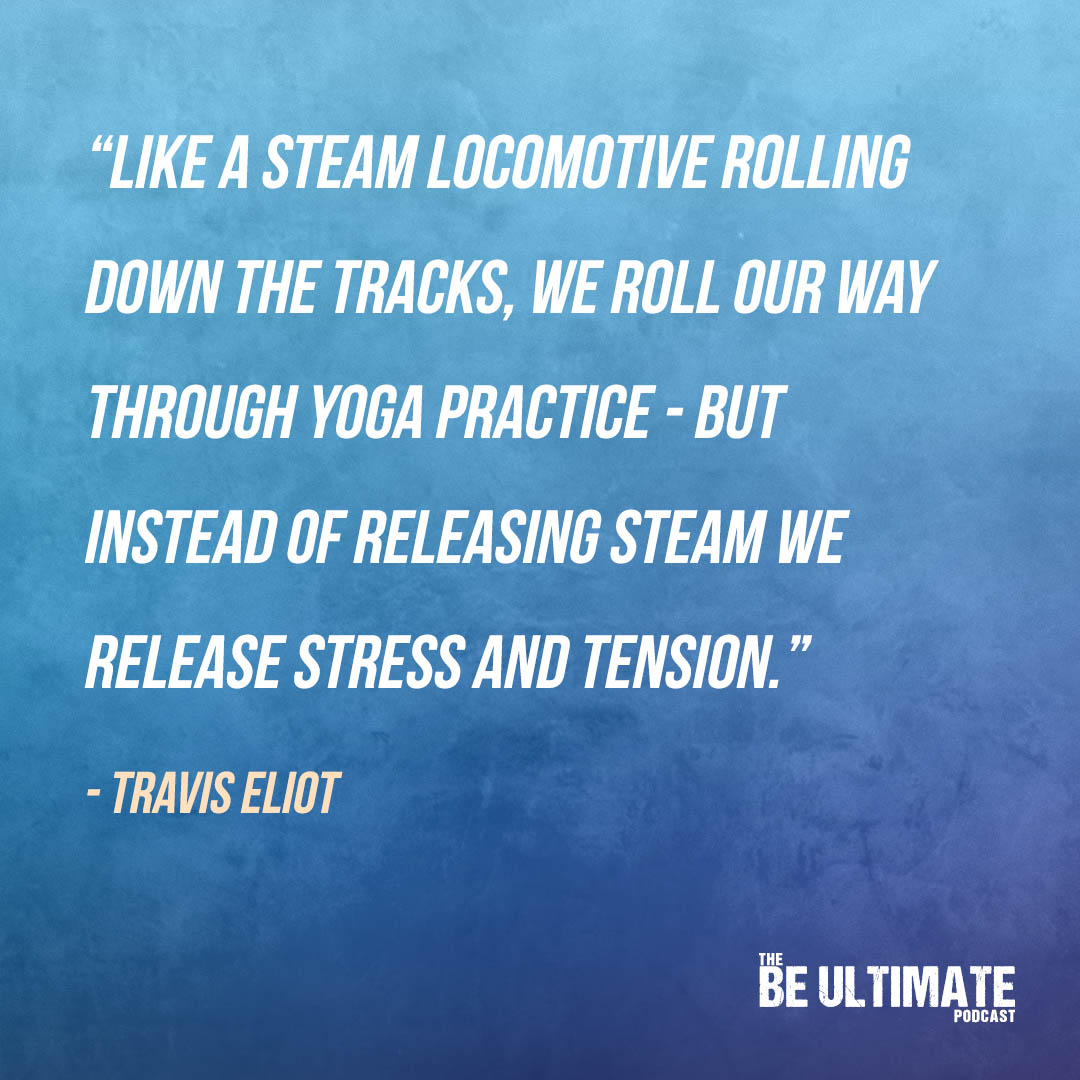
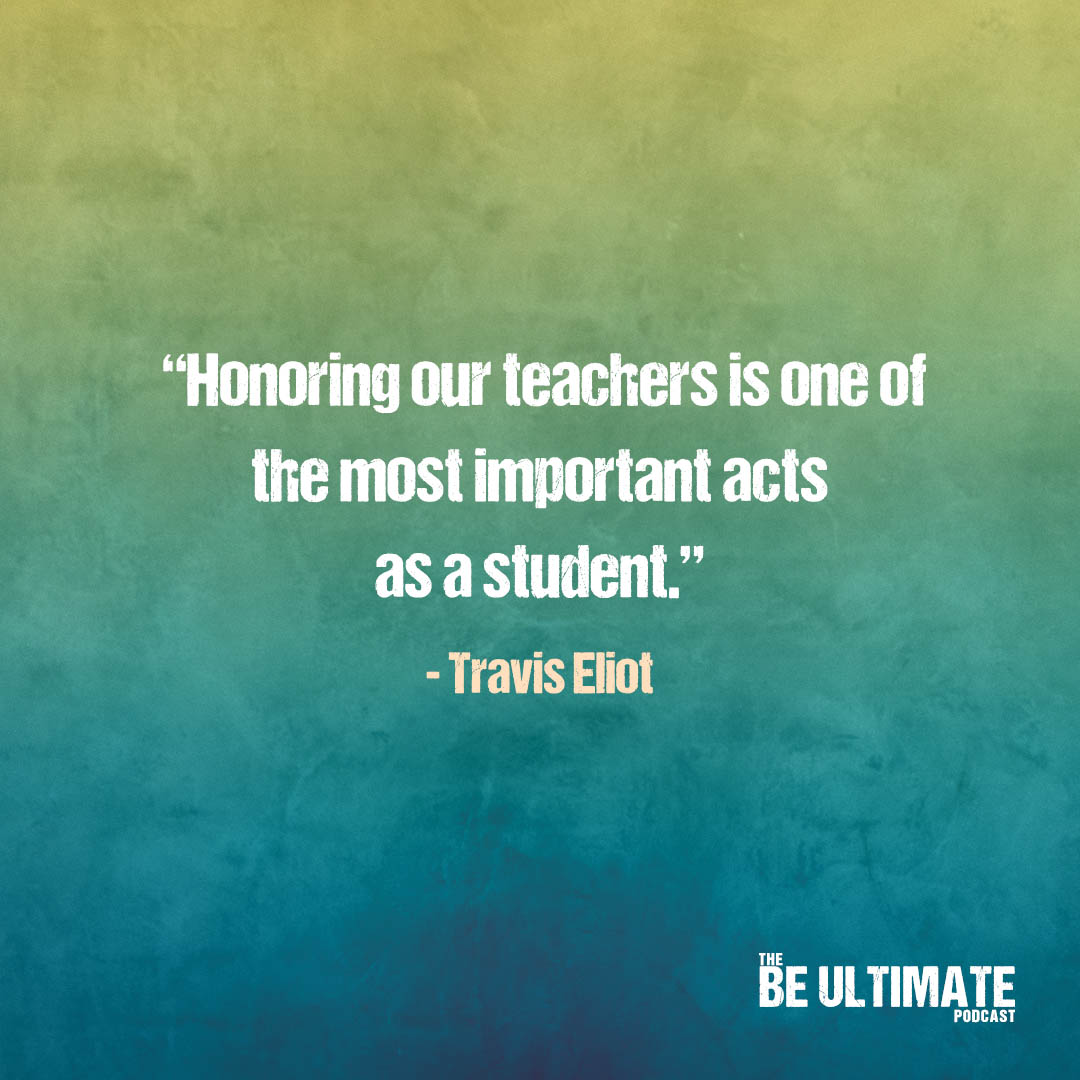
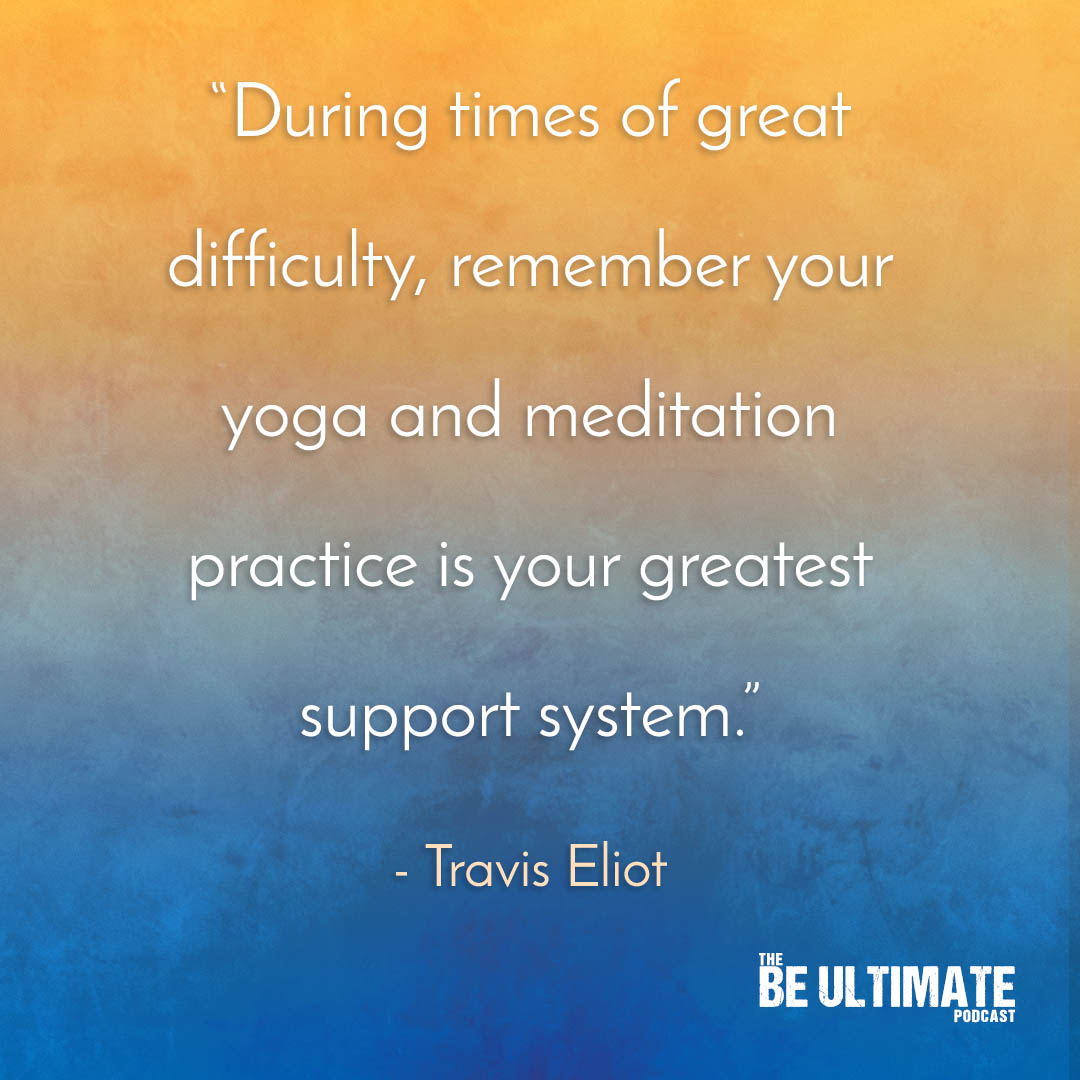
FULL TRANSCRIPT
[The following is the full transcript of this episode of “The BE ULTIMATE Podcast.” Please note that this is direct from Travis speaking unscripted and unedited.]
Welcome to “Working with Pain in Yoga.”
This week’s episode was inspired by a message I often get, and that message is from people that are asking me, “Travis, how do I work with pain? How do I deal with an injury that has arisen in my yoga practice?”
And it’s tough to get those messages, to be honest with you, because it’s hard to know unless you’re working with somebody one on one. Exactly what’s going on with that particular individual, it could be a million different things. It could be the result of a zillion different factors.
For example, it could be muscular, in the tissues of the body, or it could be something skeletal. How we approach a muscular injury, and how we approach skeletal misalignment are totally different. So I often refer people to check in with their healthcare provider. But with that said, this information that I want to share with you, hopefully, will be useful for you to think about in the back of your head and really throughout the lifetime of your yoga practice and other movement modalities to bring wisdom to this idea of pain.
Now, what could cause pain?
Well, one, we live in a human body. Sometimes people even get injured in their sleep. It doesn’t even have to do with a vigorous form of fitness and athletics. People get injured in their sleep. I know that I’ve been injured in my sleep. Several weeks ago, I woke up and my neck was completely thrown out of balance. It was the weirdest thing. Just the night before, it was totally fine, and the next day I woke up I could barely turn my head to the right, and it was scary. But what I went on to find out was is that my atlas at the very top of the neck at the base of the skull had gotten completely out of whack, so I had to go see a chiropractor. Luckily, I have a good friend, Dr. Jeremy Brook, here in Los Angeles who got me back up and running.
But just to say that in this human body what is it the Buddha said that, “The first noble truth is that life is full of suffering.” And not to be pessimistic or to be bleak, but to just say that, “Look, we face challenges in this human life and in this human body.” So part of having a human body is that we all face pain and we also face injury.
It also could be related to stress. So for me, in my instance when this happened, I was in the middle of not sleeping much at night because I have a newborn baby, and so my sleep was way lower than it usually is.
We’re also living in these challenging times with the coronavirus and so many issues on a national and global level. Stress is in the air. So sometimes because of the mind-body connection when we have stress in our mind, this manifests as an imbalance within our body.
It also could be stress from not mental but a toxic overload. For example, if we are eating poorly or we’re putting things into our body, we’re consuming too much caffeine or we’re drinking alcohol or we’re eating too much sugar, whatever it is– If we create too much of a toxic overload in our body, then this can also manifest as pain or injury within this physical form that we’re in.
Bad lifestyle choices as well. Again, if you’re staying up really late or staying up all night, you’re not getting enough sleep, if you’re partying too much, if you’re living an unbalanced lifestyle, inevitably, this shows up within the body. What’s that expression that says, “The body keeps the score.” You can’t run from your body. You can’t run from the karma in the choices that you do day in and day out, especially, the older you get, and the less resilient that your system becomes. So eventually, you’re going to have to pay that price.
Another cause for injury and pain can be a spiritual form of karma. We go and we have pain and we go to the doctors and we go to our healthcare providers and we go to yoga and we meditate and we eat well, and despite all of that, we still have the pain. We still have the injury or the disability that we’re working with. One way we can look at this is that this is a spiritual form of karma to help us grow and awaken. It’s really a deeper manifestation of a cause that’s showing up as a symptom within the body. If you want to change the fruits, you have to change the soil and the roots.
This is the power of going deep into you, not just on a physical level, but mentally, emotionally, and spiritually, and doing the work of bringing awareness and consciousness and the light of wisdom and understanding to what may be hidden underneath the surface.
Now, we can go to the other opposite end of the spectrum, and it could have nothing to do with something deep and profound like a spiritual karma. It could simply be that the way you’re moving your body is improper alignment. This is why it’s important you are trained well. Whether you’re doing cross fit or football or basketball or martial arts or jujitsu or yoga, that you have a good instructor so you understand precision within your physical, bodily alignment. Because if you don’t and you’re not trained well, it’s not a question of if, it’s just a question of when. It’s inevitable that you will get injured.
In yoga, we’re looking for what we call integrity within your joints. The word integrity means that a joint is balanced or even on all sides. When a joint is balanced and even all sides, it has stability and it has strength. Without that, we create imbalance. Then we start to get impingement, and impingement is when we begin to grind bone into bone, or we begin to overly compress a tissue, or even worse we begin to pinch a nerve or herniated disk within our spine, and then the body sounds the alarm system of pain, pain, pain.
And then why do a lot of people go get anti-pain medication and all that does is short circuit the body’s messaging and intelligence system, but it doesn’t fix the real cause of the issue. So the pain we experience is there for a very good reason and it’s nature’s way of warning you that something is wrong, something is off. Instead of blocking that important system, we want to listen to honor it so that we don’t cause damage to our body. Our body is the temple for our soul.
We want this body to be like a vehicle, like a well-oiled, well-tuned sports car. This is why it’s important to take care of your body through yoga and exercise, good lifestyle choices and eating well.
Forcing your body into a position or a pose that you don’t belong in is another cause of injury and pain as well. You may see a picture in a magazine of a yogi doing some beautiful pose, whether they’re bending their body into a pretzel-like position or they’re in a deep backward bend or whatever it is, and then you try to do it too and you end up getting injured.
By the way, a lot of yoga models are chronically injured as well because they go and they do these shoots and they have to hold these poses for way longer than they should. Those poses they’re holding whether it’s a deep backward bend or a handstand or an arm balance or an inversion is a yang-like pose. If you hold a yang-like pose for longer than a minute and a half or two, then you are bringing a yin-like quality to a yang-like pose, which never ends well. So we never want to hold a pose too long unless it’s a relaxing-seated pose like a yin-yoga posture. This is how we damage the connective tissues.
Now on a side note football players that are pounding each other start to damage the connective tissues in the deep fascia. Once those tissues go, everything else in the body begins to deteriorate. So it’s so important that we take care of the tissue structure in our body, which is why I’m a big fan of the practice of yin yoga. Yin yoga is unparalleled in its ability to bring medicine to the fascial matrix within our bodies. So if you’re not practicing yin yoga, highly recommend that you check it out. I have free classes on YouTube or you can always go to my site Inner Dimensional TV. I have yin programs you can check out.
Very often the biggest cause of an injury in yoga is our own ego, where we get competitive or we get comparative, and I see this all the time. I’ve been teaching for over 15 years, and I’ve seen brand-new students come in, especially these big muscular strapping dudes and they think they’re tough and they think they’re really, really strong, and they come to yoga and there’s some skinny dude or girl or whatever it is and they’re rocking out the yoga practice and they start competing with them and they start going into deeper variations of the posture than they are ready for, and then they get injured. They get hurt. They also get their world rocked because they had no idea how athletic yoga can be, especially if it’s a power yoga practice.
We’ve all heard the expression, “No pain, no gain.” That expression has been jammed down our throats especially if you are anybody that’s athletic. No pain, no gain. Got to get the pain to get the gain.
I was doing a form of yoga called Ashtanga yoga, which many of you might be familiar with. There’s this one pose where you stand on one leg, you lift the other foot up, and you bring it high to the top of the standing leg so you bring it high to that top thigh, and then you reach one arm around and then you grab that foot. You’re in this bind standing on one leg, and then you fold over. And I had to stop doing Ashtanga yoga. My knee was speaking through the language of pain. I didn’t listen, and therefore, I had to deal with the karma of of that.
Another cause of injury is an improper physical adjustment by a teacher when we go to yoga. There are great teachers out there, and there’s also a lot of teachers out there – especially now that yoga has gotten so big and so popular – that aren’t as well trained.
An example may be where if you’re in a seated-forward bend and you’re folding over, if the instructor comes and they place their hands behind your heart, so the upper back and they push there, that’s an improper adjustment. That adjustment should only be executed from the low, low back around the sacrum, and you push on the sacrum with awareness, with gentleness to gently guide the student. But if you start pushing in the middle of the spine, then you can create a lack of integrity in the vertebra of that thoracic spine, and therefore, you have impingement. If it’s the wrong student, then they could end up in a lot of pain. So we want to be very mindful about who’s yoga classes we’re going to that we’re going to well-trained instructors that know how to adjust properly.
You also want to make sure the teacher knows how to sequence a class that’s safe and smart.
Now, let’s talk about the difference between pain and discomfort because many students will express that they’re experiencing pain, but the reality is what they’re really experiencing is good pain, and good pain is what I call discomfort. So there’s bad pain, and then there’s good pain.
Let’s talk about bad pain.
Qualities of bad pain that you’re going to feel is sharpness in the body, bone grinding into bone where it feels you’re bumping up against the wall, and then you’re jamming into that wall — pinched nerve where it feels fire ants in that area of the body. Also if a limb falls asleep that’s not really great either because it means there’s a lack of circulation in that limb. Those are all qualities of bad pain. Usually it’s sharp and it’s intense because again the body has its own way of intelligently telling you and warning you and sounding that alarm, “This is not right.” In that situation, we obviously want to back off and back out.
Now, qualities of good pain or discomfort.
This is going to feel more of like you’re going to your massage therapist and they’re digging an elbow or they’re digging a thumb into a knot of tension. It’s painful. It hurts. It hurts while you’re getting the massage, but what happens after the massage, how do you feel? You feel amazing, right?! You feel so good and blood is now circulating through this area. You’ve released tension.
The qualities of discomfort or good pain are very similar to the qualities that you feel from a massage. It’s much more dull. It’s deep. It’s more sustainable. It doesn’t have the same intensity and sharpness that the bad pain has.
Now, I’ve been talking about how I have a six-month-old baby now and were teaching her how to sleep through the night which involves a little bit of sleep training which means that there’s crying going on. And we’re not doing the method called cry it out where you just let your baby cry all night until they shut down and fall asleep. We’re doing something that’s a little bit more compassionate. In fact, it’s called the compassionate sleep solution. One thing our coach has taught us is to be able to discern the difference while our baby is crying to be able to tell the difference between struggle and suffering. Struggle is okay so that’s the good pain or the discomfort. Suffering is the bad pain, and that’s not what you want. And you certainly don’t want baby to be suffering for too long. A little bit of suffering is okay, but ultimately what you’re looking for is that cry to be in that area of struggle. So if they’re in that mode of suffering, then you go and then you help them out. You let them know that you’re there to support them and you support and love them.
This is similar to the same approach we want to bring to yoga. Struggle is good. Challenge is good. Bumping up against our edge when we’re doing it with gentleness and kindness and compassion, that’s how we grow. That’s a very good thing and we don’t want to shy away from that.
But suffering and bad pain is not good because we’ve lost integrity, and we’ve talked about the results of that.
So this is the approach that I want you to bring to your yoga practice. When you’re in a yoga posture, I want you to really think about the difference between the struggle and the suffering, or the discomfort and the bad pain. And when you’re in the struggle mode or you’re in the discomfort, I want you to breathe through that, because that’s where you practice staying calm and equanimous, even when you’re in that moment of intensity but you’re not going into the bad pain.
The moment you go into the bad pain, the moment that you feel your body communicating to you that something is wrong. I want you to listen to that and I want you to back off and back out. And then either you modify the pose and you find a variation that works for you and your unique body and your unique situation, and if you can’t find that, just skip the pose, no big deal, just skip the pose, and jump back into the practice when you’re ready.
Now, let’s talk about what you do if you do get injured. I’ve been there. I’ve been there a few times. There’s probably a good chance that if you haven’t been injured yet, you will face this on some level. So if you get injured, obviously, it depends on what the cause is, what the symptoms are, and a whole different range of different factors. But if it’s more of a severe injury, you’re going to probably have to take off a few weeks and you need to check in with your healthcare provider.
Now if it’s a skeletal issue, you may want to consider going to a chiropractor. I know some people don’t like chiropractors, but personally I’m a big fan of them. And part of that is because I’ve encountered injuries outside of yoga. Even before I started practicing yoga, I ended up in car accidents and near-death experiences and maybe that was my spiritual karma that I had to work through. But the chiropractors throughout my life have been tremendously helpful for keeping my skeletal system and therefore my nervous system well aligned and sharp.
Now sometimes, we get a herniated disk which is when you have two vertebra in your spine compressing into the disc between the vertebra and then that little disc between the vertebra either slips out forward (anterior) or backward (posterior) and usually that causes a lot of pain. In those cases again, you’re going to want to check in with your healthcare provider. Surgery is always a last option. Sometimes, you’ve tried everything else and you take the train all the way to the very end and your last resort is surgery and you got to do what you got to do, and surgery can be helpful, but it’s usually the last resort.
If it’s more of a minor injury, then it may just mean taking off a few days or a couple of weeks, and maybe that means taking off from power yoga or vinyasa yoga.
I remember about three or four years into my yoga practice I messed up my left shoulder. I broke the shoulder when I was a kid wrestling. So I think the yoga and doing vinyasa improperly where you’re in plank pose, you lower down come in the cobra/up dog. I was doing that improperly. What a lot of people don’t know is that when you lower down from plank, down the chaturanga, down to your belly, you want your weight to be forward. So as you lower down, you’re not collapsing in your shoulders, but you’re allowing your triceps and your abdominal muscles to be the areas of the body that support you as you lower down. I didn’t know that. Anything you repeat with improper alignment, you inevitably are going to get injured, so this is why it might be really good for you if you have it to consider doing a yoga-teacher training or studying one on one with a really good teacher, so you can learn about alignment, and then you’ll have that for the rest of your yoga life.
If you get injured, you may take a few days off or a couple of weeks, and you may want to shift from power yoga to more of a yin-yoga practice or gentle or restorative yoga. If the injury is really severe, then you may want to focus more on meditation and pranayama. That’s the great thing about yoga is there’s so many different aspects and dimensions to it — there’s always something for you. Even if you’re in the hospital, you can focus on just breath, you can focus on breathing. They say that if you can breathe, you can do yoga.
So you adjust and you adapt, accordingly. Now ultimately, the more present you are to the language of bodily sensation, the less likely you are to get hurt. It’s when we’re not listening to the body or we start listening to that voice of ego that we get in trouble. While you’re doing your yoga, really focus on your yoga. When you do yoga, just do your yoga. Don’t think about conversations you had yesterday. Don’t think about things you got to do tomorrow. Focus on your yoga. This is called Ekagrata. Eka is one. Grata is pointed. You want the one pointed mind, not a multitasking mind, but the mind is like a laser. The laser is focusing on the physical sensation that your body is speaking to you.
Isn’t the foundation of any healthy relationship based upon two factors? Number one, communication. Number two, listening. There’s no question your body is communicating and speaking to you, not just every moment of your yoga practice, but also every single moment of your life. The question is, are you listening? Are you really, really listening? Or is your mind so busy and so noisy and there’s so much chitter chatter, so much distraction that you’re not listening to this brilliant magnificent intelligence and language that your body is broadcasting to you?
In yoga, we learn to quiet down the mind. We learn to turn down the volume of noise so that we can come back to the elegant simplicity of what it is that the body is speaking, moment to moment to moment. The more attuned we are to that language, the more attuned that we are to our feelings and sensations, the less likely that we are to experience the bad pain.
Alright guys. I hope that this information is helpful. I hope that you have some takeaways to take your practice to the next level. As always thank you for tuning in.
Now, let’s finish with the ultimate prayer.
“May we bring strength where there is weakness.
May we bring courage where there is fear.
May we bring compassion where there is suffering.
And may we bring light where there is darkness.
May we be ultimate.”



